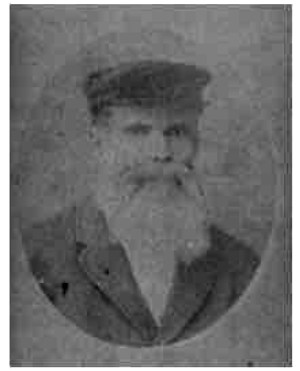George William Barnard

GEORGE WILLIAM BARNARD was christened on 13th March 1791 at Lambeth, Surrey, England. In his younger days he served as a midshipman in the Royal Navy, and later he became a Captain in the Mercantile Marine. He saw service in the Navy during the French wars. In mid 1814, he appears to have left the Navy and began to study agriculture.
He applied to come to NSW as a settler and was promised a grant of land "proportioned to his means of cultivation". In 1817, he wrote to the Governet Macquarie that he was prepared to lay out £1,000 to £1,500, and that he wished to settle in Van Diemen's Land.
George eventually arrived at Sydney Town aboard the Duke of Wellington and proceeded to the Derwent River in Van Diemen’s Land in late 1817. He bought a Colonial built schooner Sinbad in which he traded between New South Wales and Van Diemen's Land in 1818/19.
In September of 1818, he decided to settle in the north of the island and was allotted a parcel of 1,000 acres of land near Mountgarretts Lagoon on the right bank of the Tamar River. On this land he built a store and residence, and received rations for himself and six Government servants for twelve months, plus the use of six cows on two years credit, the purchase price to be paid on expiry in wheat or cash currency.
In 1820 he contracted for meat with the Government and by 1823, he had wheat contracts and had a large area under crop.
In 1826, Governor Arthur engaged his services as a surveyor for the survey of King Island in Bass Strait. He owned the boat Prince Leopold which plied between Tasmania and Sydney. In November, he left from Hobart Town, surveying the coast and King Island from the end of 1826 to early 1827. His extensive report of it's soils, fauna, flora, climate and coastal outlines was presented to Parliament, which work was much appreciated and quoted widely.
The Prince Leopold was one of two ships involved in the discovery of Strahan and the Gordon River while transporting convicts in the area and surveying for huon pine for the Government.
George applied for further employment as a Surveyor under the Colonial Government, but the British Government had appointed Mr S Sharland the the department in the early twenties and he, with Thomas Scott, did the necessary field work until the early thirties.
George returned to Lambeth in Surrey, England at the end of 1827, likely leasing his property or employing an overseer to develop it for him in his absence. In 1829 he married Anne Greensill.
In 1845, George returned to Van Diemen's Land, arriving at Port Dalyrimple near Launceston on the 369 ton barque he had chartered from London. He brought with him his wife, nine children and 3 female servants. The family settled at Landfall where a large 3 level house was built on the banks of the Barnard Creek to accommodate both the family and the flour mill which formed part of the house adjacent to the creek. A large rock and soil dam was built over the creek to channel stored water to the water wheel driving the grinding mill, however a huge flood broke the dam wall and unexpectedly flooded part of the house. As it became apparent that this phenomenon would occur again in the future, the mill workings were dismantled, sold, and later re-erected in Launceston.
Undaunted by the mill failure, George carried on farming and developed the property with the help of his sons, George and Thomas. In the meantime in 1842 he had purchased his brother Charles' 1,050 acres.
George became involved with local affairs and was for many years an active Trustee of the Church Grammar School.
He died at Landfall on 2nd September, 1864 aged 73 years from disease of the liver and a stroke which paralysed his right side. Anne survived him till 19th November, 1879 when she died at the age of 70 years. They are both buried in the picturesque cemetry at St Matthias Church, Windemere, overlooking the Tamar River which he loved so much during his lifetime.
This is a potted history taken from the family history page of George William Barnard
